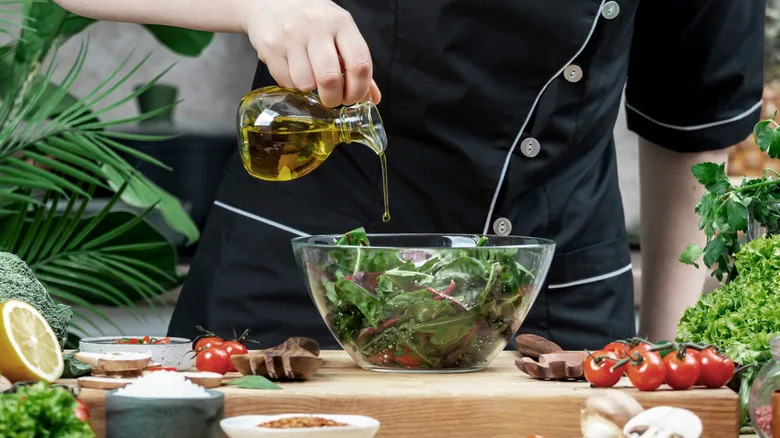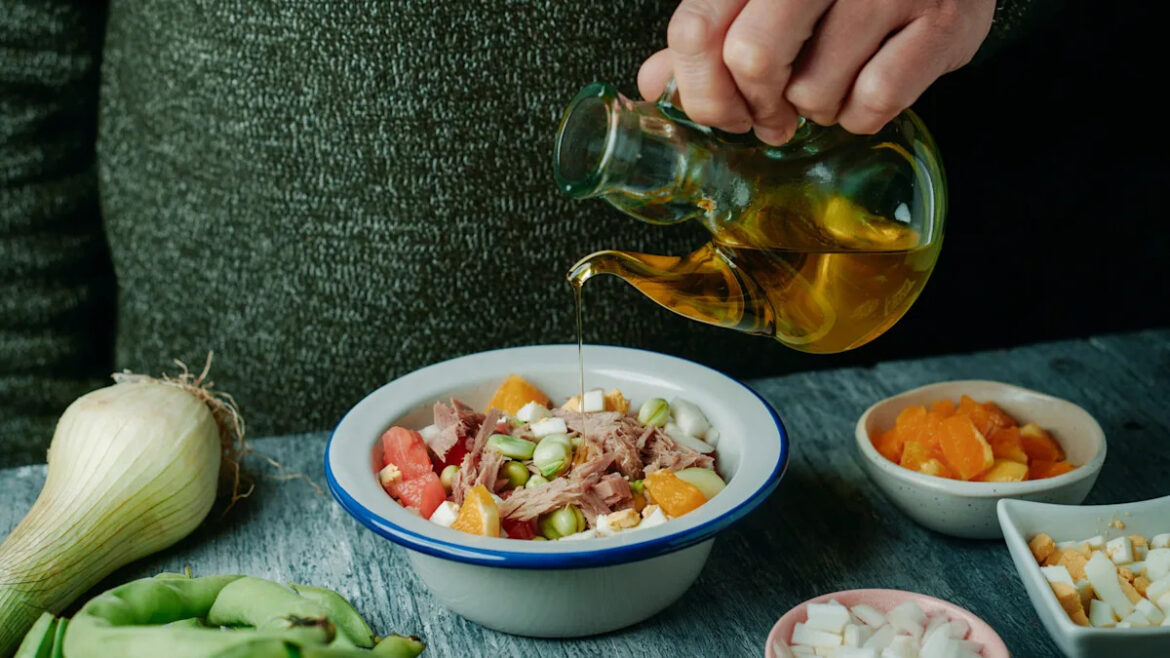We may receive a commission on purchases made from links.
Making a delicious salad dressing is, thankfully, very simple and requires few ingredients. It’s the harmony between those ingredients that ultimately makes the difference between drab or spectacular, and there’s one kind of oil that suits nearly every kind of dressing.
We consulted nutritionist, chef, and culinary director of the “The Salad Project,” Clem Haxby, for her opinions on the best go-to oil for when a salad craving hits. Her answer confirmed something that many of us already know and live by, which is that one of the best types of oils to use in salad dressing is extra virgin olive oil. “It’s full of flavor and naturally elevates any dressing,” she explains. “The fruity, peppery notes make even a simple lemon and salt combo taste like more.”
There are a lot of different types of olive oil with a spectrum of nuanced flavors and other qualities. Investing in an olive oil of high quality is important. “Have a play with different types of olive oil to find your favorite,” Haxby says. “I often finish salads with an early harvest oil to add a zingy, slightly bitter note.” A great olive oil, something tart like lemon or vinegar, and a little bit of salt and pepper is all you need to make a versatile and scrumptious dressing, but if you’re going for something with more depth, Haxby says there are other oils to consider. She explained that with mixed dressings, “If you’re making a bold or creamy dressing, you can use a neutral oil like grapeseed or sunflower so it doesn’t overpower the other flavors.”
Read more: 12 Store-Bought Italian Salad Dressings, Ranked Worst To Best
More on how to make the best salad dressings at home
Someone in a chef coat drizzling olive oil over a bowl of mixed greens resting on a counter that is covered in fresh vegetables, herbs, and greens. – 5PH/Shutterstock
The great thing about a simple olive oil vinaigrette or dressing is that it comes together quickly. If you like to make a larger batch, Haxby broke down how far in advance you can safely prep your dressing. “Up to a week ahead if it’s vinaigrette-style and stored in the fridge,” she says. “Just shake or whisk before using. Fresh herbs or garlic shorten the life a bit — three days is best.” A major woe of making an oil-heavy salad dressing or vinaigrette is the natural separation that occurs rather quickly. Luckily, Haxby has a fix for the “totally normal” separation that can occur with an oil-based dressing. “Just whisk or shake it back together,” she advises. “To help it stay emulsified, add a tiny spoon of mustard or honey — they act as natural stabilizers.”
Extra virgin olive oil makes an appearance in all kinds of dressings from this simple and tangy Greek salad dressing to an herby lemon vinaigrette to a classic Caesar. If you’re a lover of salads, then there’s no doubt that you should have at least one bottle of good olive oil on hand. It’s expert-approved versatility makes it the ultimate hack for just about every kind of homemade dressing you’re whipping up.
Want more food knowledge? Sign up to our free newsletter where we’re helping thousands of foodies, like you, become culinary masters, one email at a time. You can also add us as a preferred search source on Google.
Read the original article on Tasting Table.


Dining and Cooking